Challenges & Opportunities
Washington County Department of Land Use & Transportation
Annual Report
FY 2021-22
Washington County Department of Land Use & Transportation
Annual Report
FY 2021-22
Welcome to Challenges and Opportunities, our FY 2021-22 Annual Report. As the title says, we’ve had challenges this year. I’m proud to say Washington County Land Use & Transportation staff met those challenges head on, turning them into opportunities to improve our services to our customers.
This past fiscal year, we’ve taken opportunities to increase our public engagement efforts through partnerships with community-based organizations. This has helped us make recommendations for both the Major Streets Transportation Improvement Program 2023-2028 funding cycle and Middle Housing planning initiatives.
We’ve turned staffing shortages into opportunities to review our workflows and procedures to improve efficiencies. We’ve provided staff with opportunities to earn commercial drivers licenses to expand their skill sets and address our need for equipment operators.
Thank you for taking the time to learn about these and other challenges that we’ve turned into opportunities. We’re continuing to face more challenges in FY 2022-23. But I’m confident we’ll continue to turn these new challenges into new opportunities to continue our commitment to our Washington County community.
Stephen Roberts, Director
Washington County
Department of Land Use & Transportation
MSTIP '23-'28 funding cycle focused on public input

MSTIP improves our countywide transportation system for freight, bicyclists, pedestrians, drivers and bus riders.
The Major Streets Transportation Improvement Program (MSTIP) is an innovative program that pays for street and road improvements both inside cities and in unincorporated Washington County. MSTIP has paid for more than 150 projects totaling $900 million since 1986 and is funded by property taxes.
MSTIP projects must:
For some of our Transportation Planners, the MSTIP ’23-’28 Funding Cycle process dominated FY 2021-22. The focus of the process: Public input.
“We didn’t want to assume that we knew what the community values in our transportation system,” said Erin Wardell, Planning and Development Services Manager. “Before we started proposing projects for funding, we needed to know which projects would meet people’s needs.”
From January through March, the MSTIP Team conducted focus groups and listening sessions with the help of community-based organizations to better understand what people want from their transportation system. An online open house included a survey asking, “What’s important to you?” The majority of respondents said safety, equity and inclusion, the environment and a healthy economy were priorities.
“The opportunity to hear from the public on these topics was really valuable,” said Jessica Pelz, Senior Transportation Planner. “The feedback helped affirm our commitment to biking and pedestrian facilities, for example.”
Using community feedback and other metrics, city and county staffs proposed 25 projects throughout the county that met MSTIP funding requirements and community values. A second online open house survey asked people to select their top three projects in each commissioner district. Staff also handed out paper copies of the survey at 15 area public events, including farmers markets and community festivals. In all, 975 surveys were submitted.
“We’re using the survey results and other metrics, including refined cost estimates, to trim the list,” said Chris Deffebach, Senior Policy Analyst. “The five-year MSTIP funding has traditionally been around $160 million. The estimated cost of the 25 proposed projects exceeds that, so not all of these projects can be funded at this time.”
The Washington County Coordinating Committee is expected to recommend a final list of projects to the Washington County Board of Commissioners for action in 2023.
Traveler safety, road maintenance and pedestrian and bicycle projects

Washington County’s urban unincorporated area has grown significantly in the last 35 years. Since 1987, the Urban Road Maintenance District (URMD) has been there to keep the County moving.
The URMD is a county service district that pays for road maintenance and biking and pedestrian projects in the urban unincorporated area. Property owners in the URMD pay for it through a tax levy. The owner of a home with an assessed value of $300,000 pays less than $75 per year for URMD.
Traveler safety and road maintenance are the critical elements that define the district’s mission. In 2023, the Board of County Commissioners will decide if the URMD will continue for another 10 years.
About 430 miles of neighborhood streets are eligible for URMD maintenance funding.
In FY 2021-22, URMD maintenance work included inspections and 281,000 square yards of slurry seal on portions of 100 streets.
The URMD also funds the Neighborhood Streets Program (NSP). The program promotes safety by reducing speeding and cut-through traffic in urban neighborhoods.
Community members can request traffic-calming measures on eligible streets. We work with community members to find solutions that are the best fit for a neighborhood. Traffic calming encourages safe driving through education, enforcement and physical reminders.
The URMD is the only dedicated funding source for the Biking and Pedestrian Improvement Projects, which build bike lanes, sidewalks, multiuse paths and other pedestrian features. Since 2011, the URMD has funded 74 projects totaling more than $39 million.
The URMD also funds the Biking and Pedestrian Improvement Project selection process is community driven. People submit project proposals that will improve a specific pedestrian or biking safety concern. Proposals can include sidewalks, bicycle lanes and crosswalks. Eligible projects must improve connectivity in the URMD.
In odd-numbered years, the Urban Road Maintenance District Advisory Committee (URMDAC) reviews the proposals. There isn’t enough money to fund every proposed project. A robust community engagement process helps the URMDAC decide which projects to recommend to the Board of County Commissioners for approval.
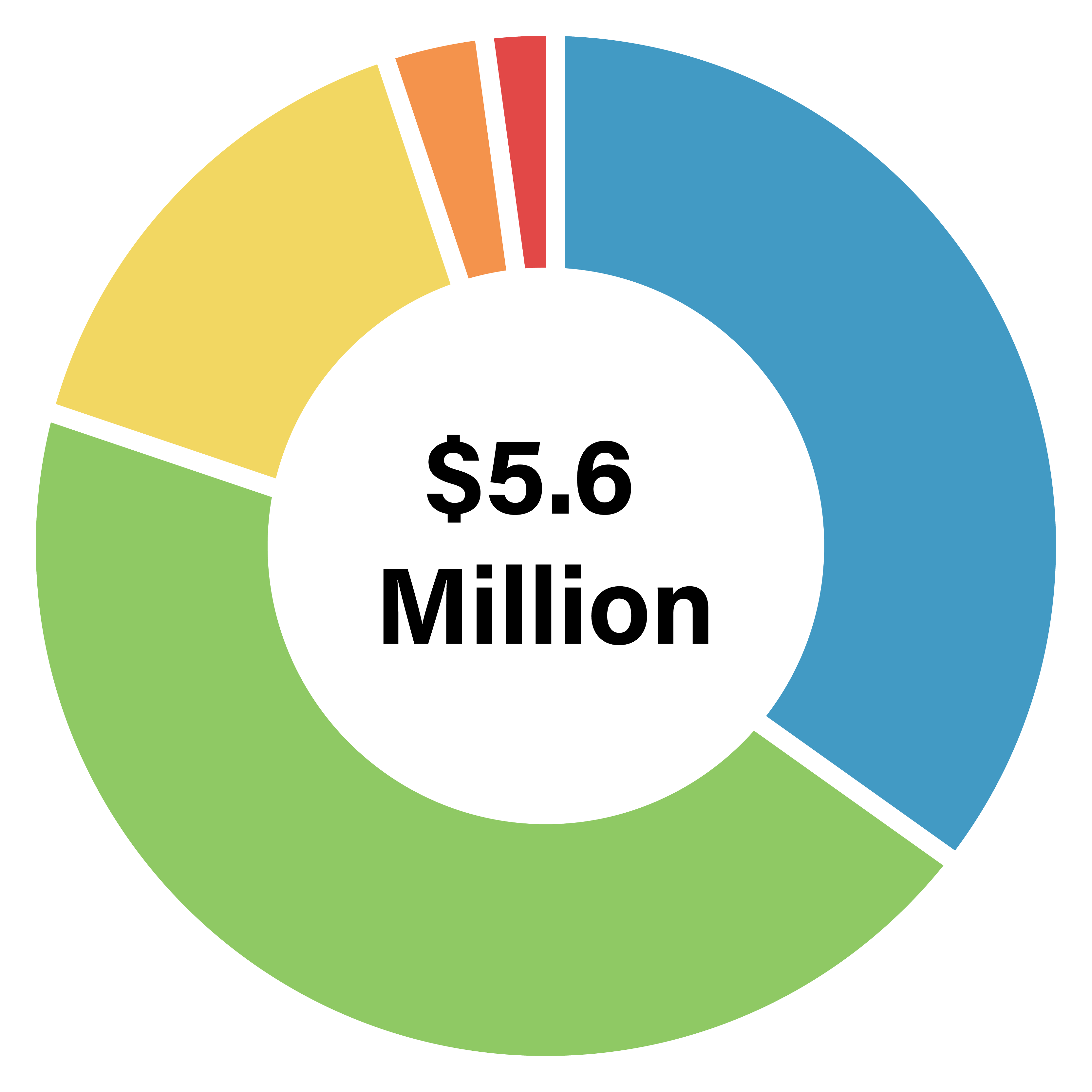

The Council Creek Regional Trail continued to move forward in FY 2021-22.
The 6-mile east-west trail segment from Hillsboro to Forest Grove is part of a network of trails planned to eventually connect Washington County, the Portland Metro area and the Oregon Coast. Planners mapped the corridor, collected data and identified any potential impacts to bridges and trestles, wetlands, archaeological, environmental and cultural resources.
The project team also met with the community to gather feedback.
“We held focus groups and attended farmers markets, festivals and other events to talk about the trail and to hear people’s suggestions,” said Julie Sosnovske, Senior Transportation Planner. “Community engagement is a key part of the process. People suggested benches and wayfinding signs. Community members also expressed interest in planning for trail safety.”
The trail will run parallel to Tualatin Valley Highway (OR 8), connecting downtown Hillsboro, Cornelius and Forest Grove, providing transportation and recreational opportunities for all who bike, hike, roll and stroll.
“The community vision includes designing a trail that feels safe for people of all ages and abilities to use and appreciate,” Sosnovske said. “People will be able to use the trail as a car-free alternative to TV Highway for commuting or running errands. It will bring a great accessible recreation opportunity to the area.”
Planners continue to develop design criteria and alternatives, focusing on safe crossings where the trail intersects with roadways.
“There are a lot of considerations going into the design and engineering work,” Sosnovske said. “I’m excited for construction, but that’s a few years away.”
Local, regional and federal funding sources have committed $25.3 million to completing the trail with the total cost estimated at $28 million.
Additional funding sources continue to be explored.
The Council Creek Regional Trail Elected Officials Steering Committee (CCRT EOSC) guides the project. Committee members are responsible for selecting the preferred alternative, agreeing on the corridor delivery and implementation plan for ownership, construction and financing, as well as trail maintenance and operations.
Bill La Fleur’s commitment to Washington County can be summarized in one word: Safety.
“It’s all about safety,” said La Fleur, an engineering technician of five years. “We need to make sure all the bike paths are good, all sidewalks are good and traffic is not obstructed. If they need to be in the road, then safety measures are in place.”
La Fleur is part of a team that reviews and inspects right-of-way permits. This commitment is critical as the team processes hundreds of permits each year. In FY 2021-22 alone, staff processed 1,715 right-of-way permits.
La Fleur begins most days by reviewing scheduled inspections. He plots the best routes to work sites noting the kinds of work he’ll be inspecting. Sometimes, there’s quite the variety.
“It can be anything from replacing a sidewalk panel to a major sewer trench going in,” he said.
The public right-of-way is the land used for roads, including sidewalks, shoulders and ditches. Utility companies also use the right-of-way to install or repair infrastructure that brings electricity, water, internet services and more. Property owners also use the right-of-way when building new driveways or improving sidewalks.
Before work like this begins, permits are needed.
Applications for right-of-way permits are created in the online Public Permitting and Services Portal. The process protects appropriate uses of the right-of-way, as well as the safety of workers and travelers.
Staff work with applicants to make sure that plans are complete. If the work impacts travel, applicants need a traffic control plan. Any right-of-way activity must improve or maintain the original condition of the road, sidewalks, planter strips and other right-of-way elements.
“If somebody’s cut into the road, we want to make sure that the road is restored correctly,” said La Fleur. “For example, proper thicknesses of base rock, proper thicknesses of asphalt, proper mix of asphalt … all must meet standards. Same with sidewalks.”
Permits are not issued until plans reflect the continued safety and accessibility of the right-of-way. Then work can begin, and permit holders can schedule inspections. Inspections help ensure work is done safely and to standards.
For example, La Fleur recently completed a final inspection of new sidewalk in front of a newly built home in Cedar Mill.
“I made sure the thickness is correct, and that there were no trip hazards,” he said. “I make sure it is built correctly.”
The inspection involved placing a level along the sidewalk to measure the slope of the panels. After a close assessment, La Fleur determined that the sidewalk was constructed in line with our adopted road standards.
Road standards are engineering specifications that meet or exceed industry guidelines. They ensure that what is built and used in the public right-of-way will be durable, long-lasting and safe.
Not all inspections are so simple. If work or safety procedures are not meeting standards, inspectors help permit holders get back on track.
“It’s crucial that the standards are met so that everyone is safe and so they can move through the public right-of-way,” said La Fleur.
Some days, La Fleur does more than a dozen inspections. Throughout each one, his commitment is foremost in his mind: Making sure that the community is traveling safely.
| FY 2021-22 | FY 2020-21 | |
|---|---|---|
| Access permits | FY 2021-22: 352 | FY 2020-21: 462 |
| Utility permits | FY 2021-22: 1,137 | FY 2020-21: 1,342 |
| General permits | FY 2021-22: 152 | FY 2020-21: 190 |
| Sidewalk Repair | FY 2021-22: 41 | FY 2020-21: 53 |
| Dust control permits | FY 2021-22: 33 | FY 2020-21: 59 |
| Total | FY 2021-22: 1,715 | FY 2020-21: 2,106 |
The public right-of-way (ROW) is land or an easement used for public roads. This usually includes sidewalks, road shoulders and ditches.
We allow mailboxes, roadside vegetation, fences and retaining walls in the ROW unless they block access. You can put basketball hoops on dead-end streets and cul-de-sacs. Traffic control and other authorized signs are also allowed.
Roadside signs, permanent structures, water wells, septic tanks and drain fields are not allowed in the ROW.
Learn more about the ROW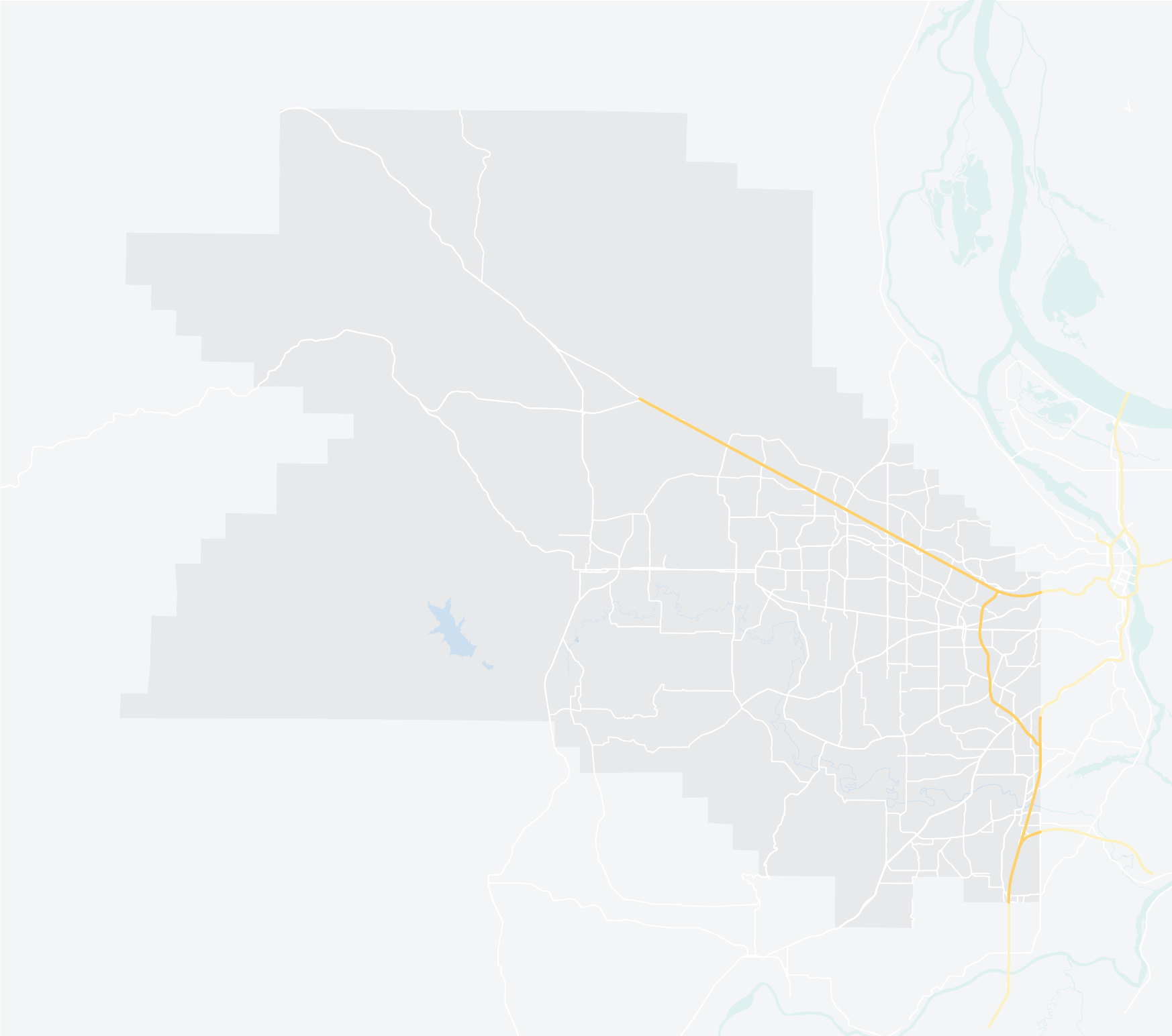
| Project | Detail | Funding | Cost | Completed | Project Manager(s) | |
|---|---|---|---|---|---|---|
|
Project: 121st Avenue In Progress |
Detail: Improving 121st Avenue, between Tippett Place and Whistlers Loop, with bike lanes and sidewalks.
|
Funding: MSTIP 3e, city of Tigard
|
Cost: $9.1 M
|
Completed: October 2023
(Expected) |
Project Manager: Pat Oakes
|
|
|
Project: 198th Avenue
|
Detail: Improved 198th Avenue, between Farmington Road and Tualatin Valley Highway, to three lanes with bike lanes and sidewalks.
|
Funding: MSTIP 3d, 3e, MSTIP Bonding Cost-sharing Program and utility reimbursements
|
Cost: $29 M
|
Completed: July 2021
|
Project Manager: Matt Costigan
|
|
|
Project: 209th Avenue and Tualatin Valley Highway Intersection
In Progress |
Detail: Improving 209th Avenue, between Alexander and Kinnaman streets, to five lanes with bike lanes and sidewalks.
|
Funding: MSTIP Bonding Cost-sharing Program, MSTIP 3e, Clean Water Services and utility reimbursements.
|
Cost: $22.6 M
|
Completed: October 2024
(Expected) |
Project Manager: Jed Corely
|
|
|
Project: Augusta Lane Pedestrian Bridge
|
Detail: Installed a pedestrian bridge over Beaverton Creek between two sections of Augusta Lane.
|
Funding: MSTIP 3e
|
Cost: $2.2 M
|
Completed: September 2021
|
Project Manager: Ben Lively
|
|
|
Project: Century Boulevard and Tualatin Valley Highway Intersection
|
Detail: Improved Century Boulevard, between Alexander and Johnson streets, to five lanes with bike lanes and sidewalks.
|
Funding: MSTIP Bonding Cost-sharing Program and utility reimbursements
|
Cost: $14.6 M
|
Completed: November 2022
|
Project Manager: Matt Meier
|
|
|
Project: Cornelius Pass Road
In Progress |
Detail: Improving Cornelius Pass Road, between Tualatin Valley Highway and Frances Street, to five lanes with bike lanes and sidewalks. Partnership with Willamette Water Supply System.
|
Funding: MSTIP Bonding Cost-sharing Program and utility reimbursements
|
Cost: $32.3 M
|
Completed: December 2023
(Expected) |
Project Manager: Charlie Stearns
|
|
|
Project: Cornell Road
In Progress |
Detail: Improving Cornell Road, between 102nd and 113th avenues, to three lanes with bike lanes and sidewalks.
|
Funding: MSTIP 3d
|
Cost: $13.1 M
|
Completed: August 2023
(Expected) |
Project Manager: Ben Lively
|
|
|
Project: Elwert and Kruger Roads Intersection Project
|
Detail: Installed roundabout, traffic signals, pedestrian path and sidewalks.
|
Funding: MSTIP 3d, city of Sherwood and Sherwood School District
|
Cost: $21.5 M
|
Completed: September 2021
|
Project Manager: Pat Oakes
|
|
|
Project: Phillips Road Bridge Replacement
|
Detail: Replaced bridge, between Helvetia and Dick roads, with a culvert.
|
Funding: County Road Fund
|
Cost: $888,000
|
Completed: October 2021
|
Project Manager: Charlie Stearns
|
|
|
Project: Pongratz Road Bridge Replacement
|
Detail: Replaced bridge over Whitcher Creek, east of Tolke Road.
|
Funding: County Road Fund
|
Cost: $1.1 M
|
Completed: December 2021
|
Project Manager: Andy Morris
|
|
|
Project: Roy Rogers Road
|
Detail: Widened Roy Rogers Road, between Scholls Ferry Road and 2,500 feet south of Bull Mountain Road, to five lanes with bike lanes and sidewalks. Partnership with Willamette Water Supply System.
|
Funding: MSTIP Bonding Cost-sharing Program and utility reimbursements
|
Cost: $39.3 M
|
Completed: February 2022
|
Project Manager: Charlie Stearns
|
|
|
Project: Roy Rogers Road
In Progress |
Detail: Improving Roy Rogers Road between Borchers Drive and Chicken Creek. Partnership with Willamette Water Supply System.
|
Funding: Transportation Development Tax and utility reimbursements
|
Cost: $21 M
|
Start Date: May 2025
(Expected) |
Project Manager: Matt Meier
|
|
|
Project: Springville Road Phase 3
|
Detail: Widened Springville Road, between Kaiser and Joss roads, to three lanes with bike lanes and sidewalks.
|
Funding: North Bethany County Service District for Roads
|
Cost: $5.5 M
|
Completed: July 2021
|
Project Manager: Ben Lively
|
|
|
Project: Tualatin-Sherwood Road
In Progress |
Detail: Improving Tualatin-Sherwood Road between Teton Avenue and Langer Farms Parkway. Partnership with Willamette Water Supply System.
|
Funding: MSTIP 3e and utility reimbursements
|
Cost: $68 M
|
Start Date: October 2025
(Expected) |
Project Manager: Matt Meier
|
|
|
Project: Tualatin-Sherwood Road / Roy Rogers Road / Highway 99W Crossing
In Progress |
Detail: Improving Tualatin-Sherwood Road/Roy Rogers Road to five lanes with bike lanes and sidewalks, and turn lanes at Highway 99W. Partnership with Willamette Water Supply System.
|
Funding: MSTIP 3c, 3d and utility reimbursements
|
Cost: $39.9 M
|
Completed: May 2024
(Expected) |
Project Manager: Matt Meier
|
| Project | Detail | Funding | Cost | Expected Start Date |
Project Manager(s) | |
|---|---|---|---|---|---|---|
|
Project: 25th Avenue and Cornell Road Intersection
|
Detail: Improving intersection with turn lanes and bike lanes.
|
Funding: MSTIP 3d, city of Hillsboro
|
Cost: $5.9 M
|
Start Date: May 2023
|
Project Manager: Abe Turki
|
|
|
Project: 170th Avenue
|
Detail: Improving 170th Avenue, between Alexender Street and Merlo Road, with bike lanes and sidewalks.
|
Funding: MSTIP 3e
(design only) |
Cost: $5.12 M
|
Start Date: June 2026
(Pending construction funding) |
Project Manager: Renus Kelfkens
|
|
|
Project: 205th Avenue
|
Detail: Replacing bridge and improving 205th Avenue, between Baseline Road and Quatama Street, with bike lanes and sidewalks.
|
Funding: MSTIP 3e
(design only) |
Cost: $3.5 M
|
Start Date: February 2024
(Pending construction funding) |
Project Manager: Andy Morris
|
|
|
Project: Alexander Street
|
Detail: Improving Alexander Street, between 178th and 192nd avenues, with bike lanes, sidewalks, landscaping and alternate parallel parking.
|
Funding: MSTIP 3e
(design only) |
Cost: $1.5 M
|
Start Date: July 2026
(Pending construction funding) |
Project Manager: Pat Oakes
|
|
|
Project: Banks Road - Cedar Canyon Road and Main Street - Highway 47 Intersection
|
Detail: Realigning intersection with a traffic signal and pedestrian crossing signals.
|
Funding: MSTIP 3e and city of Banks TIF
|
Cost: $5 M
|
Start Date: February 2024
|
Project Manager: Charlie Stearns
|
|
|
Project: Basalt Creek Parkway Extension
|
Detail: Extending Basalt Creek Parkway, between Grahams Ferry and Boones Ferry roads.
|
Funding: MSTIP 3e and Federal Highway Administration grants (Design only)
|
Cost: $47 M
(Total Cost) |
Start Date: July 2026
(Pending construction funding) |
Project Manager: Renus Kelfkens
|
|
|
Project: Blanton Street
|
Detail: Improving Blanton Street between 198th and 209th avenues with sidewalks and bike lanes.
|
Funding: MSTIP Bonding Cost-sharing Program and development reimbursements
|
Cost: $5.3 M
(Total Cost) |
Start Date: May 2024
|
Project Manager: Jed Corely
|
|
|
Project: Blanton Street and 198th Avenue Intersection
|
Detail: Improving the Blanton Street and 198th Avenue intersection.
|
Funding: TDT and Development Fee-in-Lieu (FIL)
|
Cost: $5 M
(depending design analysis) |
Start Date: May 2025
|
Project Manager: Matt Costigan
|
|
|
Project: Century Boulevard Extension
|
Detail: Extending Century Boulevard, between Borwick and Main streets, with three-lane road with bike lanes and sidewalks. Bridge may be built in a separate project phase.
|
Funding: MSTIP 3e and utility reimbursements
|
Cost: $22.3 M
|
Start Date: June 2023
|
Project Manager: Renus Kelfkens
|
|
|
Project: Cornelius Pass Road Bridge Over Butternut Creek
|
Detail: Building a new bridge to allow Cornelius Pass Road to be extended through South Hillsboro.
|
Funding: MSTIP Bonding Cost-sharing Program and developer agreement
|
Cost: $14.1 M
|
Start Date: April 2023
|
Project Manager: Charlie Stearns
|
|
|
Project: Cornelius Pass Road Bridge Over Rock Creek
|
Detail: Replacing bridge to accommodate freight traffic and bicycles.
|
Funding: MSTIP 3d Bridge Program and Federal Highway Administration
|
Cost: $4.5 M
|
Start Date: July 2023
|
Project Manager: Dan Erpenbach
|
|
|
Project: Cornelius Pass Road Pedestrian Bridge Over Highway 26
|
Detail: Designing a pedestrian bridge over Highway 26 at Cornelius Pass Road.
|
Funding: Federal Highway Administration (design only) and Gain Share
|
Cost: $700,000
|
Start Date: (Dependent on
construction funding) |
Project Manager: Charlie Stearns
|
|
|
Project: Denney Road
|
Detail: Improving Denney Road, between Scholls Ferry Road and Highway 217, with left turn lanes, bike lanes and sidewalks.
|
Funding: MSTIP 3e, city of Beaverton and utility reimbursements
|
Cost: $6.3 M
|
Start Date: June 2024
|
Project Manager: Matt Costigan
|
|
|
Project: Farmington and River Roads Intersection
|
Detail: Installing a roundabout at the intersection of Farmington Road and River Road.
|
Funding: MSTIP 3e
|
Cost: $8.2 M
|
Start Date: May 2023
|
Project Manager: Renus Kelfkens
|
|
|
Project: Fern Hill Road - Maple Street and Highway 47 Intersection
|
Detail: Installing a traffic signal at the intersection of Fern Hill Road and Maple Street with Highway 47.
|
Funding: MSTIP 3e (design only)
|
Cost: $2.2 M (Pending
construction funding) |
Start Date: March 2024
|
Project Manager: Renus Kelfkens
|
|
|
Project: Florence Street
|
Detail: Installing sidewalks along Florence Street, between 165th and 175th avenues.
|
Funding: Gain Share
|
Cost: $1.1 M
|
Start Date: March 2023
|
Project Manager: Dan Erpenbach
|
|
|
Project: Gales Creek and Thatcher Roads Intersection
|
Detail: Realigning intersection for improved sight distance.
|
Funding: County Signal/Sidewalk Funds, County Road Fund and city of Forest Grove
|
Cost: $1.1 M
|
Start Date: November 2023
|
Project Manager: Jed Corely
|
|
|
Project: Kinnaman Road
|
Detail: Improving Kinnaman Road, between 198th and 209th avenues, to three lanes with bike lanes and sidewalks.
|
Funding: MSTIP Bonding Cost-sharing Program
|
Cost: $4 M
|
Start Date: March 2023
|
Project Manager: Ryan Krueger
|
|
|
Project: Martin Road and Highway 47 Intersection
|
Detail: Building a roundabout at the Martin Road and Highway 47 intersection. Widening shoulders along Martin Road and replacing the bridge at Council Creek.
|
Funding: MSTIP 3e, Surface Transportation Block Grant and city of Forest Grove
|
Cost: $11.2 M
|
Start Date: April 2023
|
Project Manager: Renus Kelfkens
|
|
|
Project: Miller Hill Road
|
Detail: Installing sidewalks between Wagner and Georgene streets.
|
Funding: Gain Share
|
Cost: $600,000
|
Start Date: October 2023
|
Project Manager: Dan Erpenbach
|
|
|
Project: Reedville Trail
|
Detail: Paving Reedville Trail and neighborhood connections, between Baseline Road and Johnson Street. Installing street crossings.
|
Funding: MSTIP Opportunity Fund and ODOT grant funding
|
Cost: $2.2 M
|
Start Date: Februrary 2023
|
Project Manager: Ryan Krueger
|
|
|
Project: Saltzman Road
|
Detail: Installing a bridge and improving Saltzman Road, between Bayonne Lane and Laidlaw Road, to three lanes with bike lanes and sidewalks.
|
Funding: MSTIP 3e, Bonny Slope West Transportation Development Charge (design and right-of-way only)
|
Cost: $19.5 M
|
Start Date: May 2024
(Pending additional construction funding) |
Project Manager: Ben Lively
|
|
|
Project: Scholls Ferry Road
|
Detail: Improving Scholls Ferry Road, between Tile Flat and Roy Rogers roads. Partnership with Willamette Water Supply System.
|
Funding: MSTIP 3e and the cities of Beaverton and Tigard
|
Cost: $8.25 M
|
Start Date: June 2024
|
Project Manager: Charlie Stearns
|
|
|
Project: Scholls Ferry Road
|
Detail: Installing sidewalks on Scholls Ferry Road, between Laurelwood Street and 77th Avenue. Partnership with Willamette Water Supply System.
|
Funding: Gain Share
|
Cost: $1 M
|
Start Date: March 2023
|
Project Manager: Dan Erpenbach
|
|
|
Project: South Road Bridge Replacement
|
Detail: Replacing bridge over the Tualatin River.
|
Funding: ODOT SFLP and Road Fund
|
Cost: $2.3 M
|
Start Date: July 2023
|
Project Manager: Andy Morris
|
|
|
Project: Springville Road Phase 4
|
Detail: Improving Springville Road between PCC Rock Creek entrance and Joss Avenue.
|
Funding: North Bethany County Service District for Roads
|
Cost: $12.7 M
|
Start Date: May 2024
|
Project Manager: Andy Morris
|
|
|
Project: Stringtown Road Bridge Replacement
|
Detail: Replacing bridge over Prickett Creek.
|
Funding: MSTIP 3e and Road Fund
|
Cost: $1.2M
|
Start Date: July 2023
|
Project Manager: Ben Lively
|
|
|
Project: Thompson Road
|
Detail: Extending Thompson Road to Kenny Terrace, west of Saltzman Road and north of Hartford Lane, creating a new connection.
|
Funding: MSTIP Bonding Cost-sharing Program and Transportation Development Tax
|
Cost: $6 M
|
Start Date: July 2023
|
Project Manager: Andy Morris
|
|
|
Project: Thompson Road
|
Detail: Improving Thompson Road, between Saltzman and Marcotte roads, to three lanes with bike lanes and sidewalks.
|
Funding: MSTIP Bonding Cost-sharing Program and Bonny Slope West System Development Charge
|
Cost: $6.6 M
|
Start Date: May 2024
|
Project Manager: Ben Lively
|
|
|
Project: Tile Flat Road
|
Detail: Improving Tile Flat Road, between Scholls Ferry Road and the Urban Growth Boundary.
|
Funding: MSTIP Bonding Cost-sharing Program and city of Beaverton
|
Cost: $3 M
|
Start Date: June 2024
|
Project Manager: Charlie Stearns
|
|
|
Project: Walker Road/Murray Boulevard Intersection
|
Detail: Improving the intersection with left-turn lanes and dedicated right-turn lanes. Adding a southbound lane to Murray Boulevard. Replacing two bridges and two culverts on Walker Road.
|
Funding: MSTIP 3d, 3e, Transportation Development Tax, Urban Road Maintenance District and utility reimbursements
|
Cost: $31 M
|
Start Date: July 2023
|
Project Manager: Matt Costigan
|
|
|
Project: Walker Road - Phase 2
|
Detail: Improving Walker Road, between Schendel Avenue and Butner Road, to five lanes with continuous bicycle and pedestrian facilities.
|
Funding: MSTIP 3d, Transportation Development Tax and utility reimbursements
|
Cost: $16.5 M
|
Start Date: March 2023
|
Project Manager: Matt Costigan
|
|
|
Project: Walker Road - Phase 3
|
Detail: Improving Walker Road, between 173rd and 185th avenues, to five lanes with continuous bicycle and pedestrian facilities. Replacing cluvert at Willow Creek.
|
Funding: MSTIP 3e and utility reimbursements
|
Cost: $10.5 M
|
Start Date: October 2023
|
Project Manager: Matt Costigan
|
|
|
Project: West Union Road
|
Detail: Installing a dedicated left turn lane at Neakahnie Avenue.
|
Funding: MSTIP 3e and SFLP
|
Cost: $1 M
|
Start Date: March 2023
|
Project Manager: Dan Erpenbach
|

As a number of developers consult with Current Planning in preparation to submit middle housing applications, Washington County planners are expecting a growing trend.
Oregon House Bill 2001, passed in 2019, required many local governments to allow middle housing in urban neighborhoods with single detached homes. Community Planning staff spent much of FY 2021-22 engaging with the community to help expand middle housing allowances in Washington County.
“We had already allowed middle housing in our urban residential neighborhoods,” said Anne Kelly, Community Planning Senior Planner. “But we needed to update regulations to allow greater numbers and more variety in all of them.”
In the midst of that work, staff also began work on implementing Oregon Senate Bill 458, passed in 2021, which allowed division of middle housing developments into separate lots for each unit, helping to expand homeownership options for more households.
Middle housing provides more housing diversity. It can create more options for household sizes, incomes, life stages and those historically affected by discrimination. It can also help people find new housing closer to family or jobs.
Nearly 85% of community members who participated in an online open house and survey think middle housing is beneficial. Those attending focus groups and listening sessions also said middle housing is beneficial.
“We did focused outreach to groups often underrepresented in public engagement, including renters, the elderly and the BIPOC community,” said Theresa Cherniak, Community Planning Principal Planner. “We made a middle housing presentation at our twice-yearly Development Forum for the development community and met with representatives from the Home Building Association and residential builders/developers,” said Theresa Cherniak, Community Planning Principal Planner. “We received a lot of good feedback and support.”
Using this public feedback, staff drafted several ordinances to update regulations and facilitate more middle housing:
“Middle housing opportunities include both new construction and conversion of existing homes into middle housing,” said Kelly. “Both options may allow homeowners to offset mortgage costs with income from added rental units and/or expand possibilities for extended family living or aging in place.”



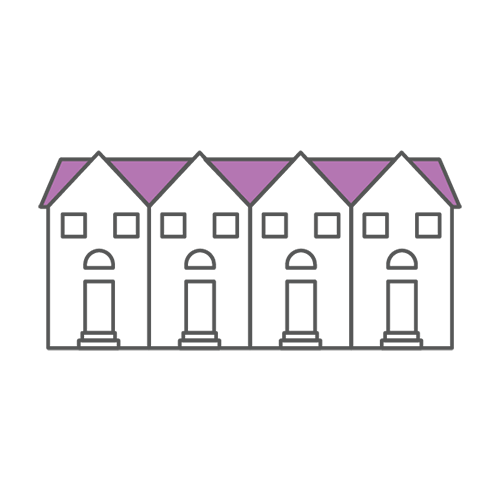

A-Engrossed ORD. NO. 877 amended the Community Development Code (CDC) for consistency with state law and to improve clarity and organization. Amendments focused on rural uses, including template forest dwellings, on farm and forest lands
Effective: 12/2/21
ORD. NO. 879 amended the Washington County-Tigard Urban Planning Area Agreement. Updates include policies regarding coordination on land use and transportation planning in Tigard’s Urban Reserve Planning Area and minor changes to polices and processes for comprehensive planning in the Urban Planning Area.
Effective: 12/9/21
ORD. NO. 865 amended the Comprehensive Framework Plan for the Urban Area, the Rural/Natural Resource Plan, the Aloha-Reedville-Cooper Mountain Community Plan, the Bull Mountain Community Plan, the East Hillsboro Community Plan and the West Union Community Plan to address the expanded regional Urban Growth Boundary in four Washington County locations.
Effective: 2/17/21
A-Engrossed ORD. NO. 881 amended the Transportation System Plan to address findings of recent planning studies, adoption of some road alignments in the Cooper Mountain and Tonquin employment areas and alignment of part of the TV Highway Regional Trail refinement area.
Effective: 3/3/22
A-Engrossed ORD. NO. 885 amended the Community Development Code to expand middle housing allowances in residential districts that already allow single-detached homes. Also included provide related standards.
Effective: 7/28/22
A-Engrossed ORD. NO. 886 amended the Comprehensive Framework Plan to provide the policy basis for middle housing regulatory changes. Amendments reflected current conditions and added middle housing references.
Effective: 7/7/22
TRANSIT DEVELOPMENT PLAN We surveyed the needs and priorities of transit users in Washington County. These results are helping to inform projects funded by Statewide Transportation Improvement Funds (STIF) for the upcoming FY 2023-25 biennium.
SHORT-TERM RENTALS Guided by the Board, we continue to develop short-term rental licensing requirements, including standards for maximum occupancy, noise, parking and trash, as well as an enforcement process for short-term rental complaints.
| FY 2021-22 | FY 2020-21 | |
|---|---|---|
| Traffic Signals (includes mid-block pedestrian signals) |
FY 2021-22: 340 | FY 2020-21: 337 |
| Fire Station Signals | FY 2021-22: 3 | FY 2020-21: 3 |
| Speed Display Signs | FY 2021-22: 26 | FY 2020-21: 26 |
| Pedestrian-actuated Beacons | FY 2021-22: 37 | FY 2020-21: 33 |
| Flashing Beacons | FY 2021-22: 34 | FY 2020-21: 37 |
| School Zone Flashers | FY 2021-22: 142 | FY 2020-21: 144 |
| Traffic Analysis Reports Associated With Land Development Proposals | FY 2021-22: 25 | FY 2020-21: 26 |
| Road Closures | FY 2021-22: 14 | FY 2020-21: 23 |
| New Requests for Traffic Signs, Striping and Other Operational/Safety Issues Evaluated | FY 2021-22: 1,936 | FY 2020-21: 1,891 |
| FY 2021-22 | FY 2020-21 | |
|---|---|---|
| Records of Survey Reviewed and Filed | FY 2021-22: 257 | FY 2020-21: 246 |
| Public Land Corners Maintained | FY 2021-22: 84 | FY 2020-21: 51 |
| Plats (subdivisions, condos, and partitions) Reviewed and Approved | FY 2021-22: 87 | FY 2020-21: 92 |
| GPS Mapping Control Established on Monuments | FY 2021-22: 35 | FY 2020-21: 63 |
| Public Land Corners Remonumented | FY 2021-22: 18 | FY 2020-21: 30 |
| Road Legalizations | FY 2021-22: 2 | FY 2020-21: 3 |
| Total | FY 2021-22: 483 | FY 2020-21: 485 |
| FY 2021-22 | FY 2020-21 | |
|---|---|---|
| Neighborhood Safety Campaigns | FY 2021-22: 69 | FY 2020-21: 98 |
| Neighborhood Meetings Held | FY 2021-22: 3 | FY 2020-21: 1 |
| Lawn Signs Distributed | FY 2021-22: 38 | FY 2020-21: 54 |
| Total | FY 2021-22: 80 | FY 2020-21: 153 |
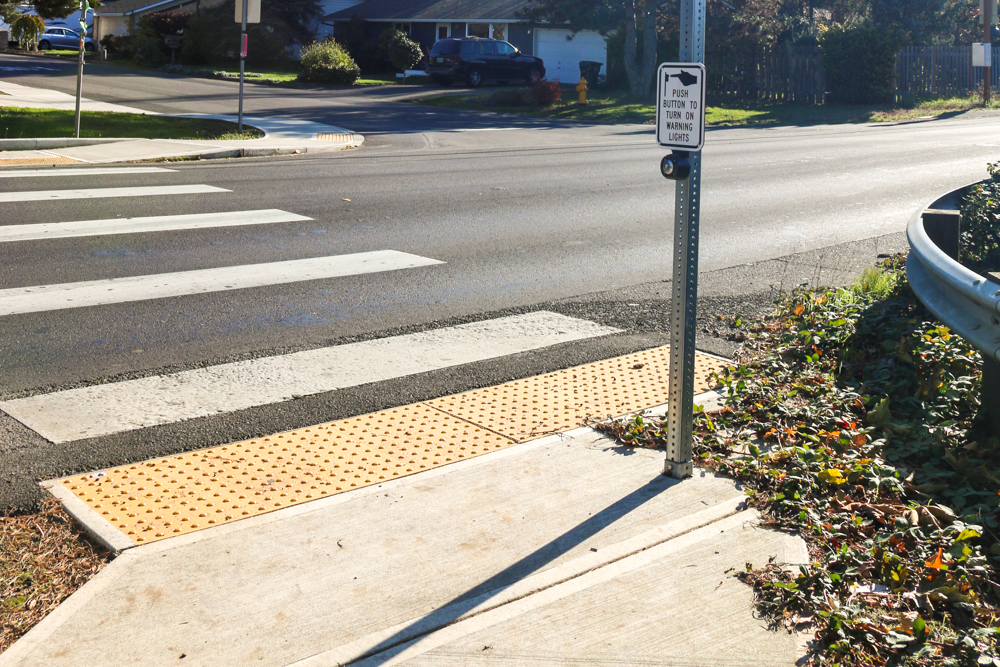
| FY 2021-22 | FY 2020-21 | |
|---|---|---|
| ADA ramps – URMD funding | FY 2021-22: 101 | FY 2020-21: 204 |
| ADA ramps – other funding | FY 2021-22: 378 | FY 2020-21: 119 |
| Total | FY 2021-22: 479 | FY 2020-21: 323 |
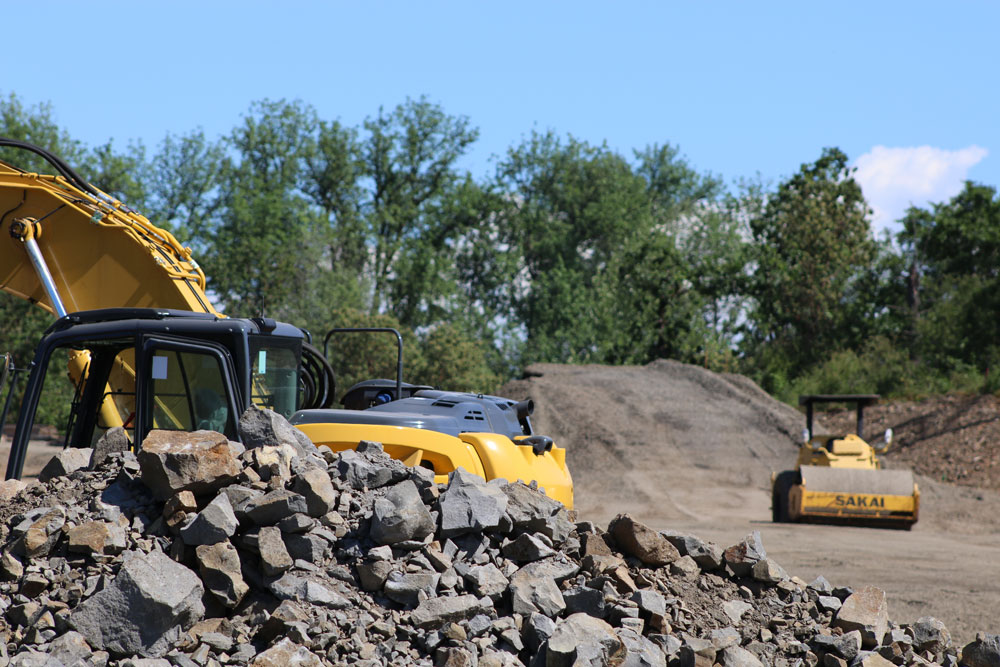
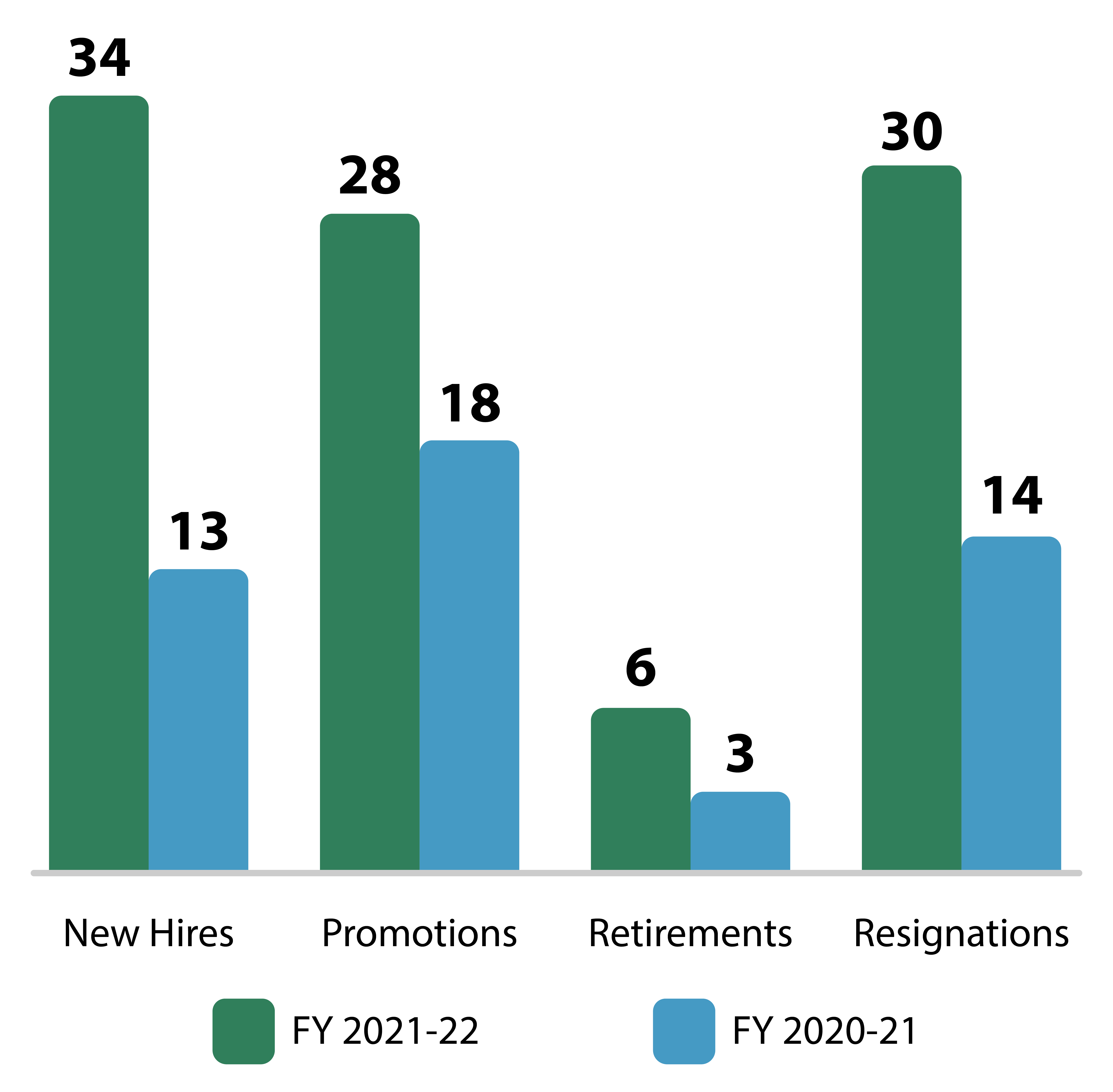
Service District for Lighting is the funding mechanism for street lighting on public neighborhood streets in urban unincorporated areas.

FY 2020-21: 12,598

FY 2020-21: 47,020
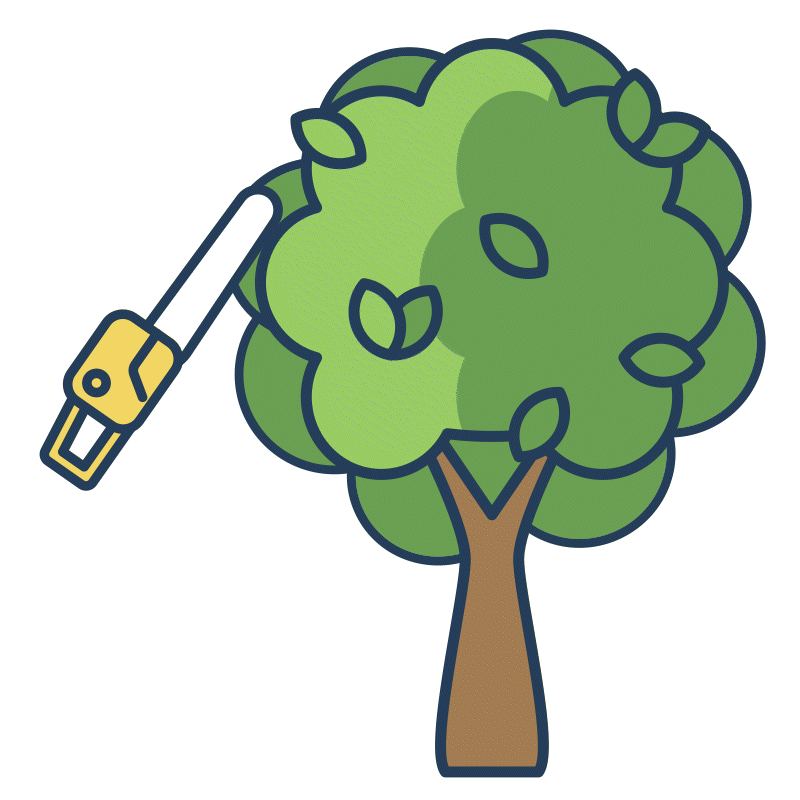
FY 2020-21: 0

FY 2020-21: 466

FY 2020-21: 456

FY 2020-21: 183

FY 2020-21: 135

FY 2019-20: 171
| FY 2021-22 | FY 2020-21 | |
|---|---|---|
| Total Structurally Sound | FY 2021-22: 101 | FY 2020-21: 103 |
| Total Functionally Obsolete/Structurally Deficient, Past Design Life | FY 2021-22: 82 | FY 2020-21: 82 |
| Total | FY 2021-22: 183 | FY 2020-21: 185 |
| FY 2021-22 | FY 2020-21 | |
|---|---|---|
| Minor Culverts (6”-36”) | FY 2021-22: 2,457 | FY 2020-21: 2,457 |
| Major Culverts (>=36”) | FY 2021-22: 566 | FY 2020-21: 564 |
| Total | FY 2021-22: 3,023 | FY 2020-21: 3,021 |
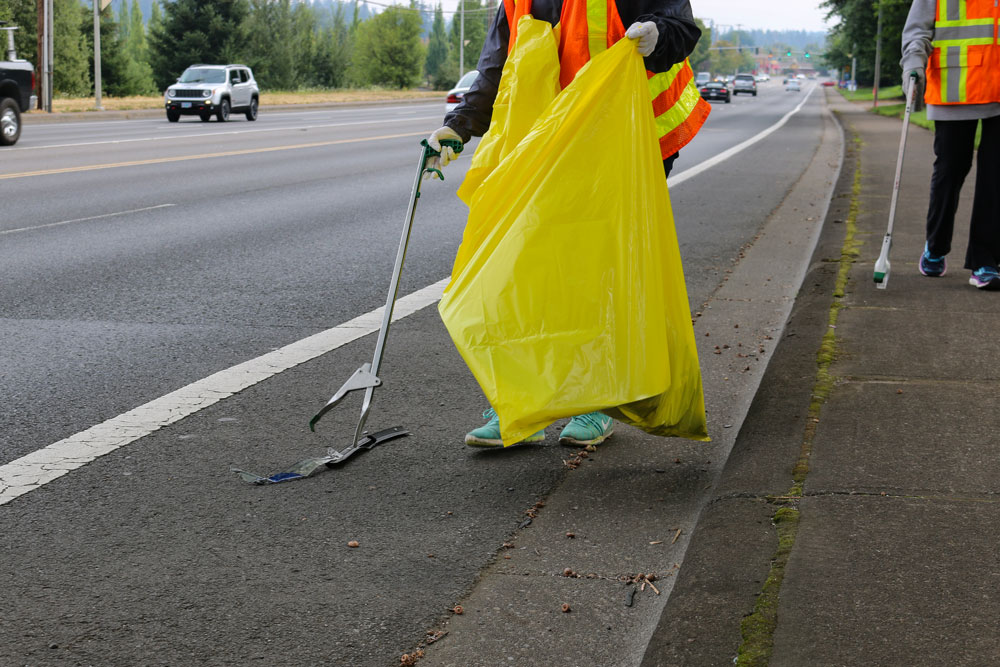
| FY 2021-22 | FY 2020-21 | |
|---|---|---|
| Adopt-A-Road Groups | FY 2021-22: 114 | FY 2020-21: 109 |
| Litter Cleanups | FY 2021-22: 42 | FY 2020-21: 60 |
| Adopt-A-Landscape Groups | FY 2021-22: 10 | FY 2020-21: 10 |
| Adopt-A-Landscape Urban Roadways | FY 2021-22: 10 | FY 2020-21: 10 |
| Total | FY 2021-22: 176 | FY 2020-21: 189 |

| FY 2021-22 | FY 2020-21 | |
|---|---|---|
| Road Closures Processed | FY 2021-22: 14 | FY 2020-21: 23 |
| Block Parties | FY 2021-22: 9 | FY 2020-21: 4 |
| Race, Walk and Bike Events | FY 2021-22: 9 | FY 2020-21: 2 |
| Parades | FY 2021-22: 4 | FY 2020-21: 0 |
| Film and Video Events | FY 2021-22: 1 | FY 2020-21: 6 |
| Total | FY 2021-22: 37 | FY 2020-21: 20 |

FY 2020-21: 406

FY 2020-21: 38

FY 2020-21: 206

FY 2020-21: 283

FY 2020-21: 1,942

FY 2020-21: 1,376

FY 2020-21: 322

FY 2020-21: 8

FY 2020-21: 134

FY 2020-21: 3,738

FY 2020-21: 47,078

FY 2020-21: 137

FY 2020-21: 568

FY 2020-21: 12,619